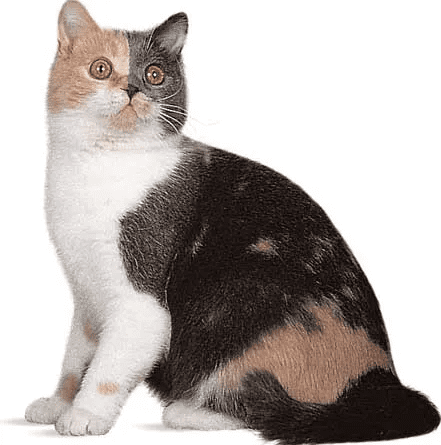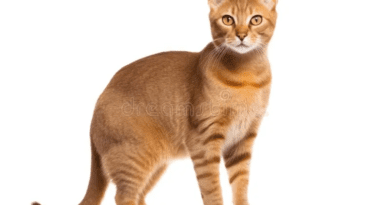Domestic Shorthair Cat Breed Description and Complete Care Guide
A domestic shorthair cat (Felis catus) is a cat with a short coat of fur that is not a member of any specific recognized cat breed. They are sometimes referred to as moggies in Britain.
Domestic short-haired cats differ from British shorthair, American shorthair, and other standardized breeds with Short-hair names recognized by different registries.
Around 95% of domestic short-haired cats are found in the United States, making them the most popular breed. The Domestic Shorthair Cat can also be referred to as: House Cat, Shorthair or Shorthair Household Pet.
Domestic short-haired cats occur in a wide range of colors, and after a few generations, they frequently return to type, manifesting their coats as tabby cats, any color or color combination may be used for this.
Additionally, they exhibit a wide range of physical characteristics, which gives domestic short-haired cats a tendency to have various body types and sizes depending on the gene pools they draw from.
Asian domestic shorthair cats often have a build similar to a “classic” Siamese, whereas those from Europe and America have a larger, heavier physique.
Free reproduction of domestic short-haired cats has served as the foundation for a number of modern formal breeds, including the American Shorthair and the European Shorthair or Celtic Shorthair. In these cats, obesity is a common disease.
Domestic Shorthairs exist in a broad variety of colors, patterns, and sizes, but they are usually muscly and of medium size. They have claws, short shining coats, and rounded skulls. Domestic Shorthairs often have no particular health issues and live for 15 to 20 years due to their mixed ancestry.
The domestic shorthair cat has a strong body structure, a round face, and round eyes. A Domestic shorthair with mixed ancestry may have different genetic characteristics that affect her stature.
Domestic shorthairs can be social, quiet, noisy, playful, and affectionate. The domestic shorthair cat is not naturally violent, which makes her a wonderful friend for kids and elders and also a fantastic playmate for other cats, dogs, and animals.
Due to their endurance abilities, such as balancing and leaping, as well as its excellent hunting instinct, the Domestic Shorthair is regarded as a working cat. Her jovial nature frequently reflects these traits.
Read Also: American Shorthair Cat Breed Description and Complete Care Guide
How Domestic Shorthair Cat Breed Originated
The Domestic Shorthair cat first appeared during the early days of pioneer colonization in North America, and because of its devoted rat-catching abilities, it was considered a working cat. Early immigrants loved the Domestic shorthair because it is strong and healthy.
For food and shelter, the cats work very hard to keep rats and other pests out of barns and food storage facilities. In this way, the Domestic ended up on ships sailing to North America. These cats are built for enjoyable and cost-effective labor.
The Domestic Shorthair Cat is approved by the Cat Fanciers’ Association (CFA) in the Household Pets category even though it is not a pedigreed breed. The Domestic Shorthair is an excellent pet if you are in search of a loving, outgoing cat to share your life with.
Read Also: Exotic Shorthair Cat Breeds Description and Complete Care Guide
Domestic Shorthair Cat Grooming Guide

The Domestic Shorthair requires little maintenance and is not likely to get sick. The American Society for the Prevention of Cruelty to Animals, however, emphasizes that these animals may be susceptible to overeating, which can result in obesity along with many of the health issues associated with carrying additional weight.
Select a nutritious cat food that will give her the nourishment she requires to live a happy, active life. It’s crucial to keep your cat’s grooming routine on track. Along with routine combing with a rubber or stainless steel comb or brush, regular claw trimming and teeth brushing will keep your cat in peak condition.
Establishing a maintenance schedule with your cat from an early age will help make it a stress-free process for both of you, in addition to yearly check-ups with your veterinarian. The Domestic Shorthair cat can live up to twenty years with adequate care.
1. Have your pet neutered or spayed? You should have your cat spayed when she is six months old or neutered if your cat is male. In addition to reducing aggressive or marking behavior in males and heat behavior in females, this will assist in preventing your cat from producing babies if you don’t want her to.
2. Domestic shorthair cats have dense, short coats, so brush your pet: This implies that you ought to give her a strong brushing once each week as this will prevent shedding and keep her fur nice and smooth.
3. While brushing your cat, look for any skin irregularities: Your cat may have lumps, bumps, sores, scratches, bruises, or skin irritations. Keep an eye on them for a few days to see if you see anything. Take her to the veterinarian if they don’t go away or if you find that they are growing larger or itchier.
4. You must routinely brush your cat’s teeth to prevent gum disease and other oral health issues: Take daily care of her teeth, you can either ask your doctor for some cat-friendly toothpaste or get it from your local pet store. Get a cat toothbrush that has soft bristles as well.
5. You must pay attention to your Domestic Shorthair’s nails in order to maintain them: Purchase good cat claw clippers from a pet store or use clean human nail clippers. Remove the white sections of the nail after inspecting the claws.
Domestic Shorthair cats should normally be bathed every 4-6 weeks, depending on how frequently they groom themselves and the settings they frequently inhabit. If your cat enjoys being outside and pooing while playing, you’ll need help grooming them because they can’t do it on their own.
Your domestic cat may be very active at night due to this very strong pattern of behavior, but try to always remember that it’s only in her character to wake you up at 4 a.m. to want a snack or food.
Read Also: British Shorthair Cat Breed (Felis catus) Description and Complete Care Guide
Read Also: How to Choose the Right Trash Service for Your Needs








